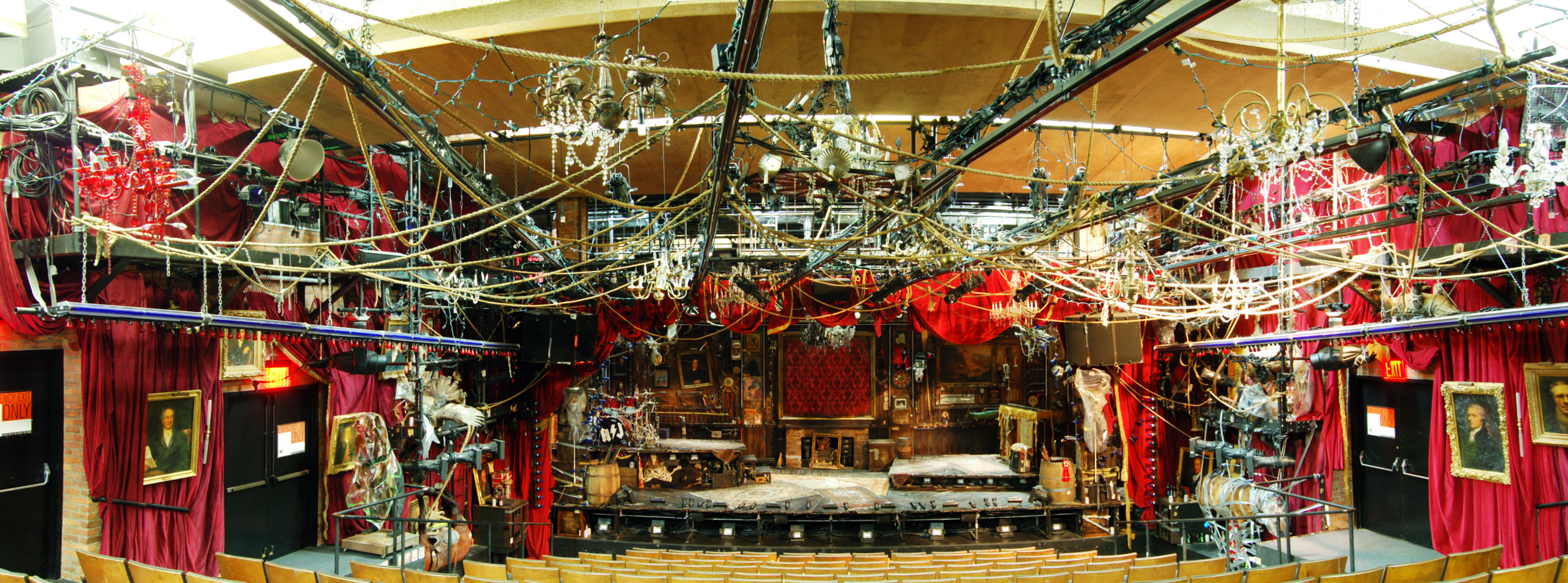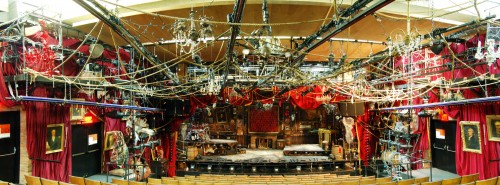This past week was the 53rd USITT conference in Milwaukee. This year’s conference featured a lot of things for props people. I couldn’t get to them all, but I saw a lot of them. I took notes which I may go through later, but since I’m writing this on the flight home (and have to work first thing in the morning), I’ll just give the highlights.
First off, there was the Expo floor, filled with companies, organizations and universities peddling their wares. Wonderflex World had plenty of samples of their products, including a sneak peek of a new product coming out soon that is pretty exciting.
Smooth-On had their usual cool booth with all the rubber monsters and foam cinder blocks you can make with their products. There’s a possibility I may start getting samples of their new products to test out for this blog. That would be neat.
StageBitz had demos of their props management and inventory software. I first tested them out about two years ago, and it’s almost completely different now (in a good way). You can do a 3-week free trial of their software from their website, which is really the only way to start discovering how easy and seamless this can make propping a show, from letting the designer share images and research with you, to letting you send the designer pictures of items in your stock, to keeping up with changes in rehearsal, creating to-do lists to send to your artisans and shoppers, maintaining a budget, to finally adding all the props to your stock when the show closes.
RC4 Wireless Dimming had tiny wireless dimmers. It sounds simple, but it’s amazing how these little devices act so seamlessly to let you control any sort of battery-powered light or motor from your theatre’s lighting console. I also attended a session called “Wireless Light and Motion for Propmasters”, where a couple theatres were showing off various ways they used the RC4 units.
One of the last sessions of the conference was on sustainability in design and production led by Donyale Werle. It included the exciting unveiling of the College Green Captain Toolkit, based off of the already-successful program which every Broadway show participates in (I’ll post a link when it appears, or you can contact the Broadway Green Alliance for more information). Jacob Coakley from Stage Directions Magazine live-blogged much of the session.
An earlier session on “Reimagining Theatre with Green Ideals” also featured information about sustainability and the Broadway Green Alliance. Once again, Jacob Coakley live-blogged the whole discussion.
“Grave Matters” was a session with a lot of good tips and tricks for making gore and corpses. One of the speakers, Gary Benson, has his presentation online , including step-by-step photographs of how he made some skulls.
“You’ll Shoot Your Eye Out” was a bit disappointing since 3 of the 4 presenters could not be there. However, you can check out the handouts on firearm safety that they had. You will also find a link for a survey they are running to discover how various theatres deal with guns on stage (and off). I’m not sure how long that link will last, so you should download those files rather than bookmarking them.
I got to check out the Young Designer’s Forum, which had some great work. I was also able to meet two of my future coworkers this summer at the Santa Fe Opera.
The Milwaukee Rep props shop hosted a SPAM get-together at their space, though it was nice to see plenty of non-SPAM props masters and prop makers there as well. I wrote about their shop for Stage Directions this month, but to actually see their work space and storage facilities in person was a great treat.

Oh yeah, I also sold out of my book by the end of my signing. The response has been overwhelming so far. I am ecstatic that so many people are excited about this book, and I can’t wait to hear back from those of you who use it or teach from it.
Did I forget anything about the conference? Was there something I missed? Let me know in the comments what you saw at USITT that excited you.



